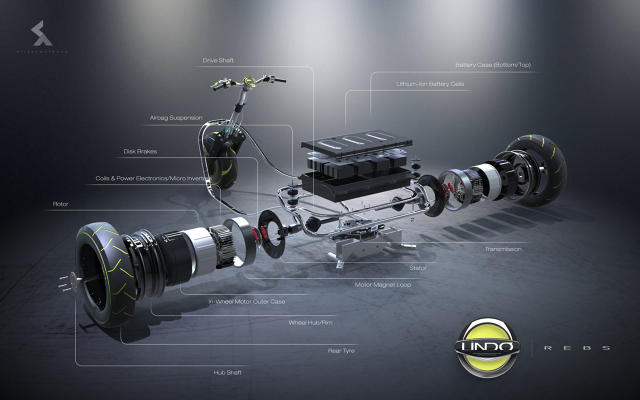Tuk-tuks might be everyday, ubiquitous transportation in Nairobi or Phnom Penh, but can these tiny three-wheeled taxis also find a place in sprawling, car-obsessed cities like L.A. or Atlanta?
A design student has reimagined a sleek, electric, app-connected version of the vehicle, called the Lindo, that could give city dwellers a new option for public transportation. The system is designed to be more flexible than taking a bus or train stuck on a fixed route, and more sustainable than riding in a full-sized taxi or Uber car.
The designer, RMIT University student Kyle Armstrong, sees the vehicle as a way to help ease traffic in Melbourne, Australia, his quickly-growing hometown. “With more people come more cars, which in turn creates more congestion and pollution,” he says. “What I hoped to address with the Lindo was the current stress of population growth and congestion within our cities, and to help counteract the effects of emissions.”

The design is a concept for now. He sketched out a vision of an Uber-like app that would hail electric vehicles for a pick up. Inside the vehicle, a rider could use the app to play music from his or her phone, change the lighting in the passenger compartment, or instantly pay for a ride. The Lindo could also be used as a delivery service, picking up and dropping off a package rather than a person.
The biggest challenge for the designer was altering the look of the classic tuk-tuk (also called an auto rickshaw) and turning it into something that people in Melbourne would actually want to ride in. “This was no easy task, as the vehicle was innately awkward, ugly, and out of fashion,” Armstrong says.
The end result was curved carbon fiber frame that looks more like a modern motorcycle than the squatty, golf-cart like tuk tuk. The ultra-lightweight materials mean it doesn’t use as much energy as a heavy electric car. A photovoltaic skin helps charge the lithium batteries inside the vehicle, and it can also be plugged in. But the system itself—possibly even easier to use than current ride-sharing options—might be the part of the design most likely to attract riders.

“I wanted to offer users a unique service that they could immediately relate to and bond to,” says Armstrong.
Armstrong’s design was a student winner in the 2015 Core77 Design Awards. Because Armstrong wanted to push the limits of the design, it wouldn’t be cheap to make in its current form. Still, it’s an interesting idea. If most taxi or Uber rides have a single passenger, the driver’s also hauling around extra seats and several hundred extra pounds of metal. Why not downsize on-demand transportation?
A few companies are already trying to popularize tuk-tuks in Western cities, like eTuk USA, which recently launched a new electric line of the vehicles in the U.S., and is running a small shuttle service now in Denver. But their designs don’t have the looks or tech-savvy of the Lindo, and it’s hard to imagine that they’ll take off in their current iteration.
[All Images: via Kyle Armstrong]